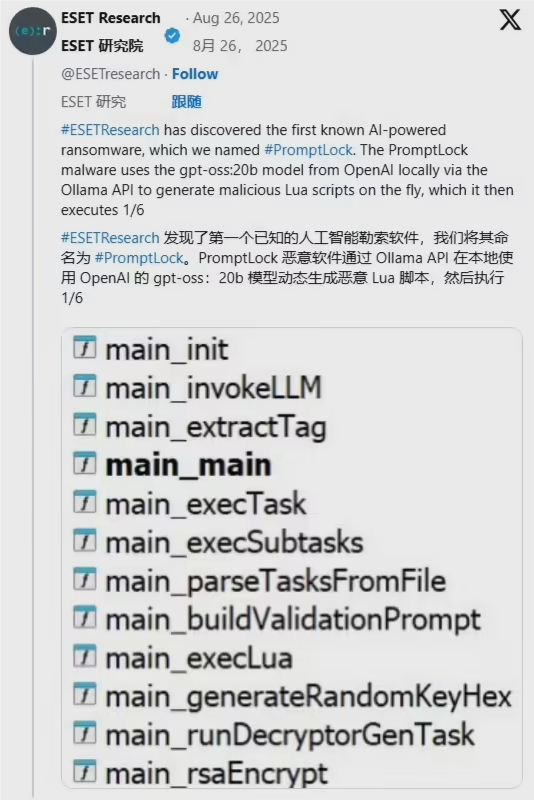Recently, the renowned cybersecurity company ESET revealed the world's first AI ransomware - PromptLock. This malicious software uses the open-source gpt-oss:20b language model from OpenAI, and can generate malicious Lua code locally on infected devices. The concern is that it not only supports the Windows system, but can also run on Linux and macOS platforms.
According to ESET's latest report, PromptLock calls the gpt-oss:20b model using preset text prompts, generating malicious code directly on the victim's device that can search, steal, and encrypt files. The design of this program allows it to be flexibly adapted to various operating systems, with a high level of stealth and adaptability. Although it has not been found that PromptLock has the ability to directly delete files, its potential threat is obvious, and hackers may further upgrade and improve it in the future.

Regarding the operation mechanism, the gpt-oss:20b model itself is large in size, about 13GB, and requires a high amount of VRAM. However, ESET pointed out that attackers can build internal agents or tunnels to connect the victim's network to an external server, thereby using the model running on the external server and accessing it through the Ollama API, thus bypassing the local VRAM limitations.
Security experts said that PromptLock may be just a proof-of-concept program or still under development, but it should not be ignored that this event could be an early signal of malicious use of local or private AI. John Scott-Railton, a researcher at Citizen Lab, warned that current defense measures are not yet prepared to deal with this new type of threat.
OpenAI responded to this incident, thanking the researchers for the report, and stated that they have taken corresponding measures to reduce the risk of the model being misused. OpenAI said they will continue to work hard to improve protective mechanisms, ensuring their technology is not used for illegal activities.
With the continuous development of AI technology, the challenges of cybersecurity are also increasing. We need to be vigilant against these new threats and take effective defensive measures to protect our digital assets and privacy security.








